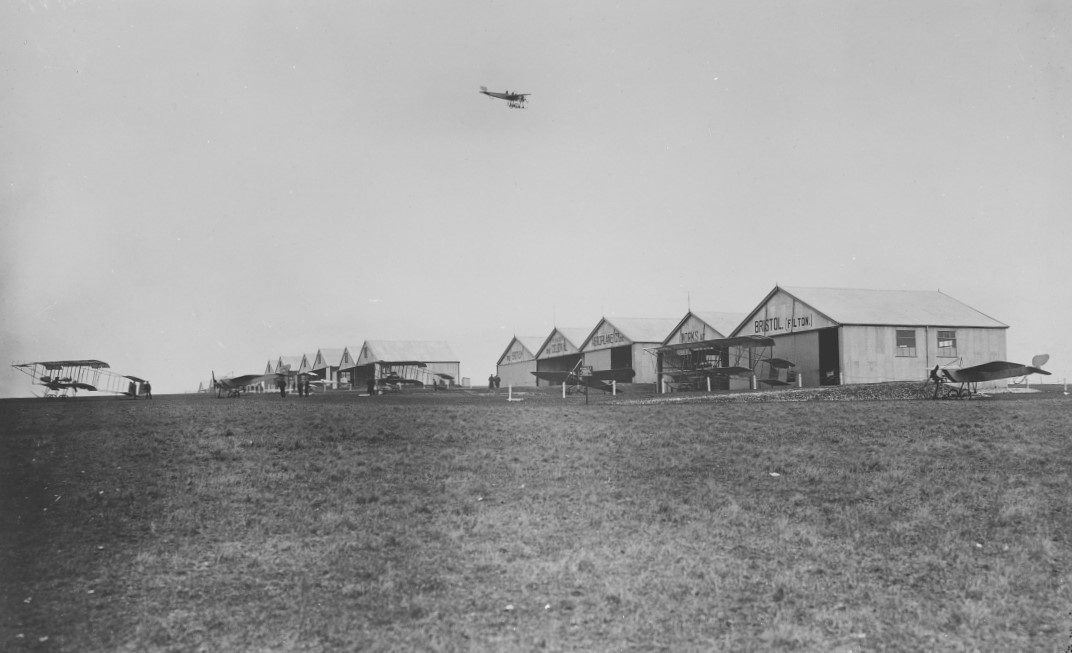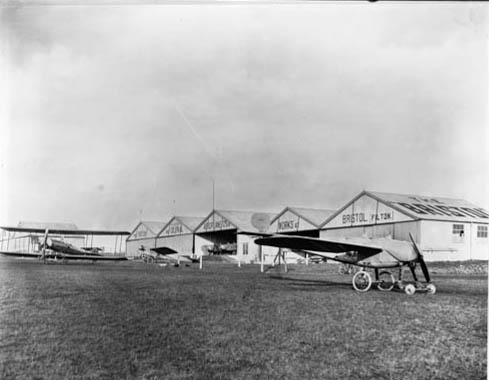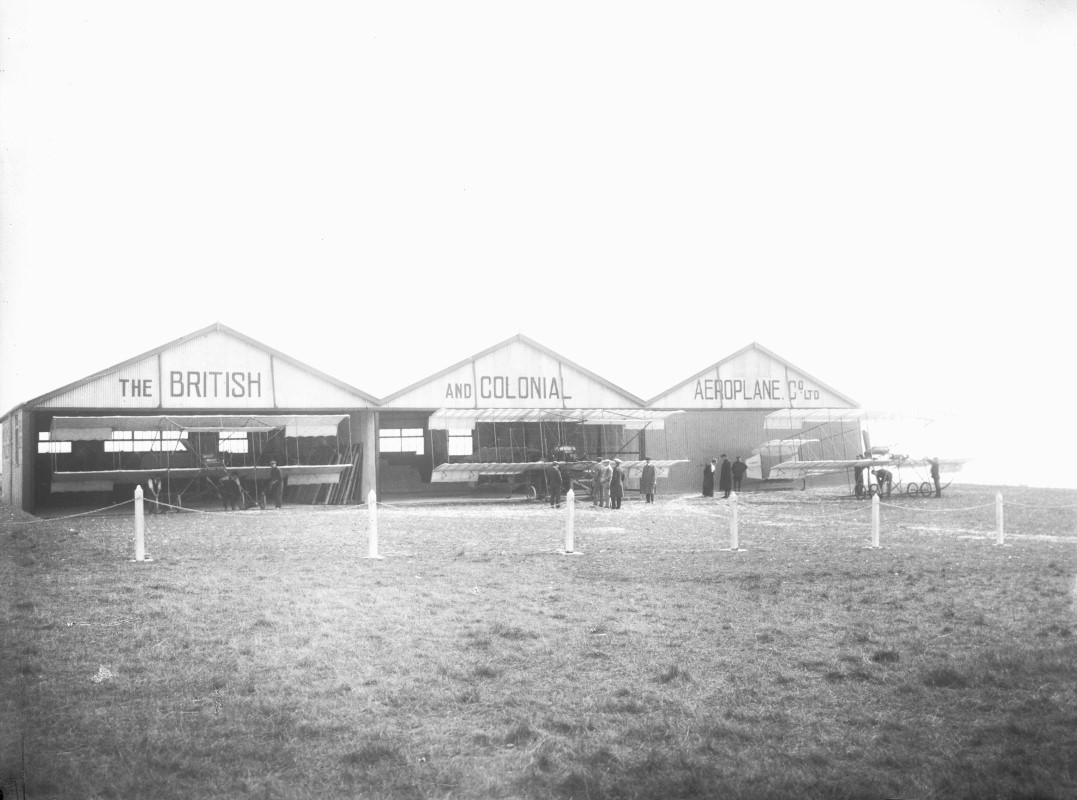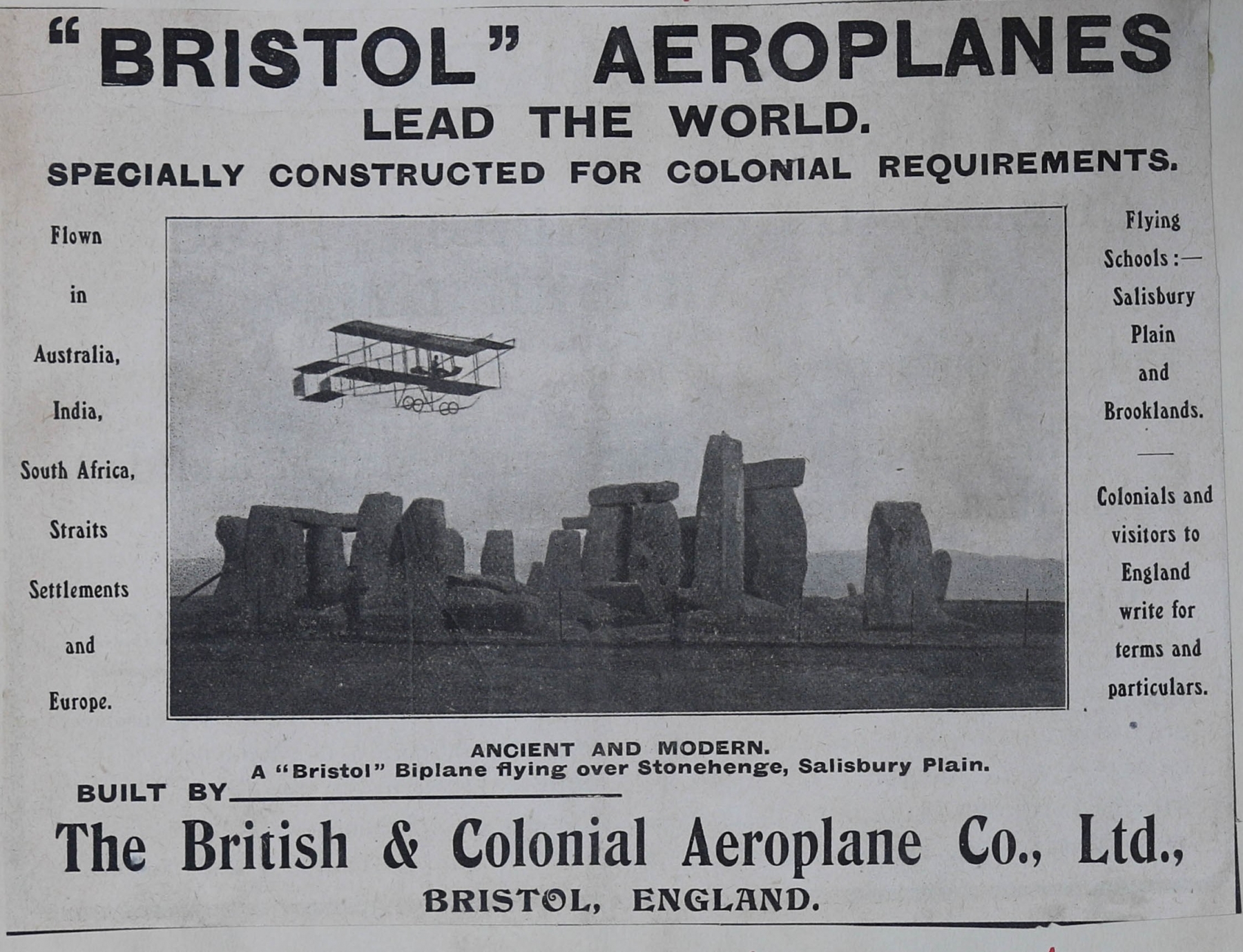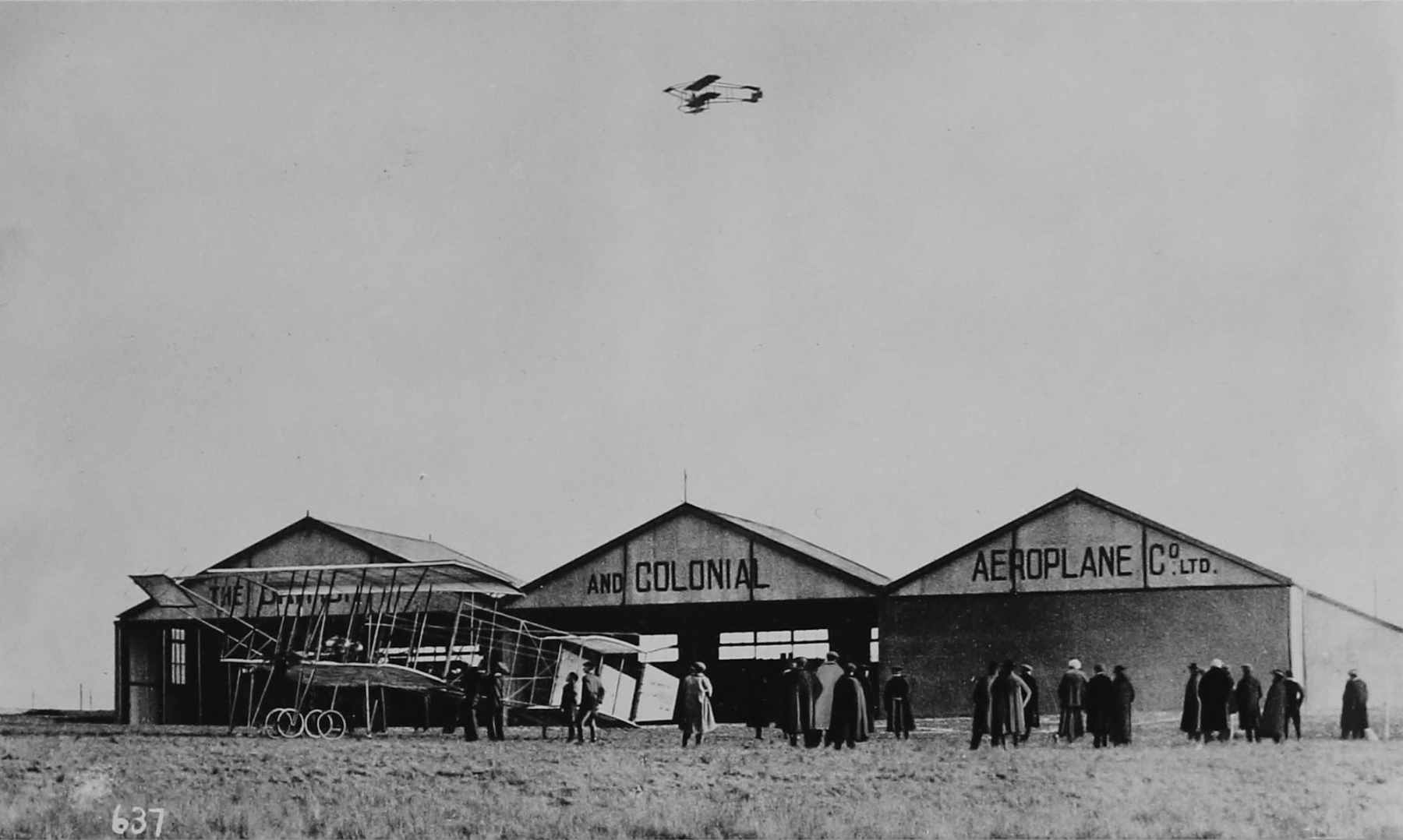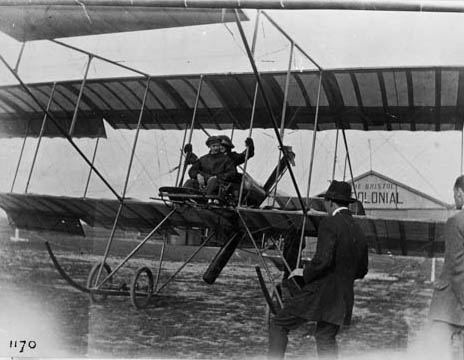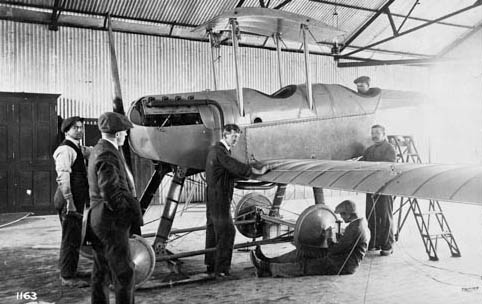By the end of 1910, Bristol had two UK flying schools up and running, one at Lark Hill on Sailsbury Plain and one at Brooklands in Surrey. The school on Salisbury Plain was deliberately opened close to the army barracks to attract officers who wanted to become pilots. This school was set up at least a year before the military created their own pilot school so Bristol aircraft were being used to train most of the pilots in the British Armed Forces in the run up to the war. Bristol's advertising boasted about the schools as well as their position as suppliers to the British and Russian armies.
Bristol Flying School
If they fly with us, they will buy with us Take me here now
Sir George White set up a chain of flying schools across the south of England with the aim of cornering the market in pilot training
